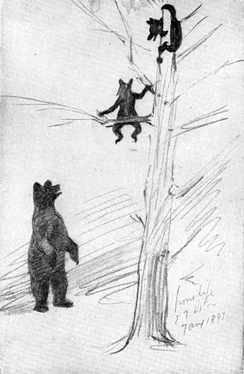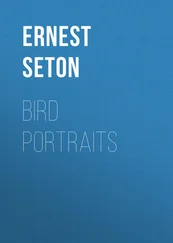Ernest Seton - Wild Animals at Home
Здесь есть возможность читать онлайн «Ernest Seton - Wild Animals at Home» весь текст электронной книги совершенно бесплатно (целиком полную версию без сокращений). В некоторых случаях можно слушать аудио, скачать через торрент в формате fb2 и присутствует краткое содержание. Год выпуска: 2009, Жанр: Природа и животные, на английском языке. Описание произведения, (предисловие) а так же отзывы посетителей доступны на портале библиотеки ЛибКат.
- Название:Wild Animals at Home
- Автор:
- Жанр:
- Год:2009
- ISBN:нет данных
- Рейтинг книги:5 / 5. Голосов: 1
-
Избранное:Добавить в избранное
- Отзывы:
-
Ваша оценка:
- 100
- 1
- 2
- 3
- 4
- 5
Wild Animals at Home: краткое содержание, описание и аннотация
Предлагаем к чтению аннотацию, описание, краткое содержание или предисловие (зависит от того, что написал сам автор книги «Wild Animals at Home»). Если вы не нашли необходимую информацию о книге — напишите в комментариях, мы постараемся отыскать её.
Wild Animals at Home — читать онлайн бесплатно полную книгу (весь текст) целиком
Ниже представлен текст книги, разбитый по страницам. Система сохранения места последней прочитанной страницы, позволяет с удобством читать онлайн бесплатно книгу «Wild Animals at Home», без необходимости каждый раз заново искать на чём Вы остановились. Поставьте закладку, и сможете в любой момент перейти на страницу, на которой закончили чтение.
Интервал:
Закладка:
Our party was carefully selected, a lot of choice spirits, and yet there was one with a sad and unpardonable weakness—he always snored a dreadful snore as soon as he fell asleep. That is why he was usually put in a tent by himself, and sent to sleep with a twenty-five foot deadening space between him and us of gentler somnolence.
He had been bad the night before, and now, by request, was sleeping fifty feet away. But what is fifty feet of midnight silence to a forty-inch chest and a pair of tuneful nostrils. About 2 A.M. I was awakened as before, but worse than ever, by the most terrific, measured snorts, and so loud that they seemed just next me. Sitting up, I bawled in wrath, "Oh, Jack, shut up, and let some one else have a chance to sleep."
The answer was a louder snort, a crashing of brush and a silence that, so far as I know, continued until sunrise.
Then I arose and learned that the snorts and the racket were made, not by my friend, but by a huge Grizzly that had come prowling about the camp, and had awakened me by snorting into my tent.
But he had fled in fear at my yell; and this behaviour exactly shows the attitude of the Grizzlies in the West to-day. They are afraid of man, they fly at whiff or sound of him, and if in the Yellowstone you run across a Grizzly that seems aggressive, rest assured he has been taught such bad manners by association with our own species around the hotels.
THE DIFFERENT KINDS OF BEARS
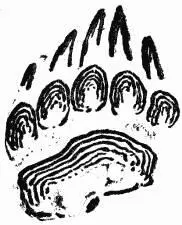
Some guides of unsound information will tell the traveller that there are half a dozen different kinds of Bears in or near the Yellowstone Park—Blackbear, Little Cinnamon, Big Cinnamon, Grizzlies, Silver-tip, and Roach-backs. This is sure however, there are but two species, namely, the Blackbear and the Grizzly.
The Blackbear is known by its short front claws, flat profile and black colour, with or without a tan-coloured muzzle. Sometimes in a family of Blackbears there appears a red-headed youngster, just as with ourselves; he is much like his brethren but "all over red complected" as they say in Canada. This is known to hunters as a "Little Cinnamon."
The Grizzly is known by its great size, its long fore claws, its hollow profile and its silver-sprinkled coat. Sometimes a Grizzly has an excessive amount of silver; this makes a Silver-tip. Sometimes the silver is nearly absent, in which case the Bear is called a "Big Cinnamon." Sometimes the short mane over his humped shoulders is exaggerated; this makes a "Roach-back." Any or all of these are to be looked for in the Park, yet remember! they form only two species. All of the Blackbear group are good climbers; none of the Grizzly group climb after they are fully grown.
BEAR-TREES
There is a curious habit of Bears that is well known without being well understood; it is common to all these mentioned. In travelling along some familiar trail they will stop at a certain tree, claw it, tear it with their teeth, and rub their back and head up against it as high as they can reach, even with the tip of the snout, and standing on tiptoes. There can be no doubt that a Bear coming to a tree can tell by scent whether another Bear has been there recently, and whether that Bear is a male or female, a friend, a foe or a stranger. Thus the tree serves as a sort of news depot; and there is one every few hundred yards in country with a large Bear population.
These trees, of course, abound in the Park. Any good guide will point out some examples. In the country south of the Lake, I found them so common that it seemed as if the Bears had made many of them for mere sport.
A PEEP INTO BEAR FAMILY LIFE
When we went to the Yellowstone in 1897 to spend the season studying wild animal life, we lived in a small shanty that stood near Yancey's, and had many pleasant meetings with Antelope, Beaver, etc., but were disappointed in not seeing any Bears. One of my reasons for coming was the promise of "as many Bears as I liked." But some tracks on the trail a mile away were the only proofs that I found of Bears being in the region.
One day General Young, then in charge of the Park, came to see how we were getting along. And I told him that although I had been promised as many Bears as I liked, and I had been there investigating for six weeks already, I hadn't seen any. He replied, "You are not in the right place. Go over to the Fountain Hotel and there you will see as many Bears as you wish." That was impossible, for there were not Bears enough in the West to satisfy me, I thought. But I went at once to the Fountain Hotel and without loss of time stepped out the back door.

I had not gone fifty feet before I walked onto a big Blackbear with her two roly-poly black cubs. The latter were having a boxing match, while the mother sat by to see fair play. As soon as they saw me they stopped their boxing, and as soon as I saw them I stopped walking. The old Bear gave a peculiar " Koff koff ," I suppose of warning, for the young ones ran to a tree, and up that they shinned with alacrity that amazed me. When safely aloft, they sat like small boys, holding on with their hands, while their little black legs dangled in the air, and waited to see what was to happen down below.
The mother Bear, still on her hind legs, came slowly toward me, and I began to feel very uncomfortable indeed, for she stood about six feet high in her stocking feet, and I had not even a stick to defend myself with. I began backing slowly toward the hotel, and by way of my best defense, I turned on her all the power of my magnetic eye. We have all of us heard of the wonderful power of the magnetic human eye. Yes, we have, but apparently this old Bear had not, for she came on just the same. She gave a low woof, and I was about to abandon all attempts at dignity, and run for the hotel; but just at this turning-point the old Bear stopped, and gazed at me calmly.
Then she faced about and waddled over to the tree, up which were the cubs. Underneath she stood, looking first at me, then at her family. I realized that she wasn't going to bother me, in fact she never seemed very serious about it, so I plucked up courage. I remembered what I came for and got down my camera. But when I glanced at the sky, and gauged the light—near sundown in the woods—I knew the camera would not serve me; so I got out my sketch book instead, and made the sketch which is given on Plate XXXVIII; I have not changed it since.

XLI. While I sketched the Bears a brother camera hunter was stalking me without my knowledge
Photo by F. Linde Ryan, Flushing, L. I.
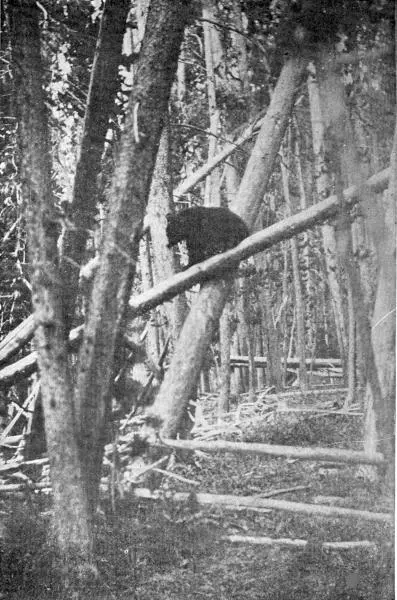
XLII. One meets the Bears at nearly every turn in the woods
Photo by E. T. Seton
Meanwhile the old Bear had been sizing me up, and evidently made up her mind that, "although that human being might be all right, she would take no chances for her little ones."
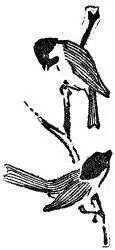
Интервал:
Закладка:
Похожие книги на «Wild Animals at Home»
Представляем Вашему вниманию похожие книги на «Wild Animals at Home» списком для выбора. Мы отобрали схожую по названию и смыслу литературу в надежде предоставить читателям больше вариантов отыскать новые, интересные, ещё непрочитанные произведения.
Обсуждение, отзывы о книге «Wild Animals at Home» и просто собственные мнения читателей. Оставьте ваши комментарии, напишите, что Вы думаете о произведении, его смысле или главных героях. Укажите что конкретно понравилось, а что нет, и почему Вы так считаете.
